This tangy and delicious Sesame Ginger Dressing recipe is perfect for adding Thai flavor to salads & bowls. Let pasta salad marinate in it overnight for an infusion of Asian flavors, or top an Asian Chicken Salad with the dressing for a perfect finishing touch.
Add Salt & Serve may earn affiliate commissions from purchases made using links on this page.
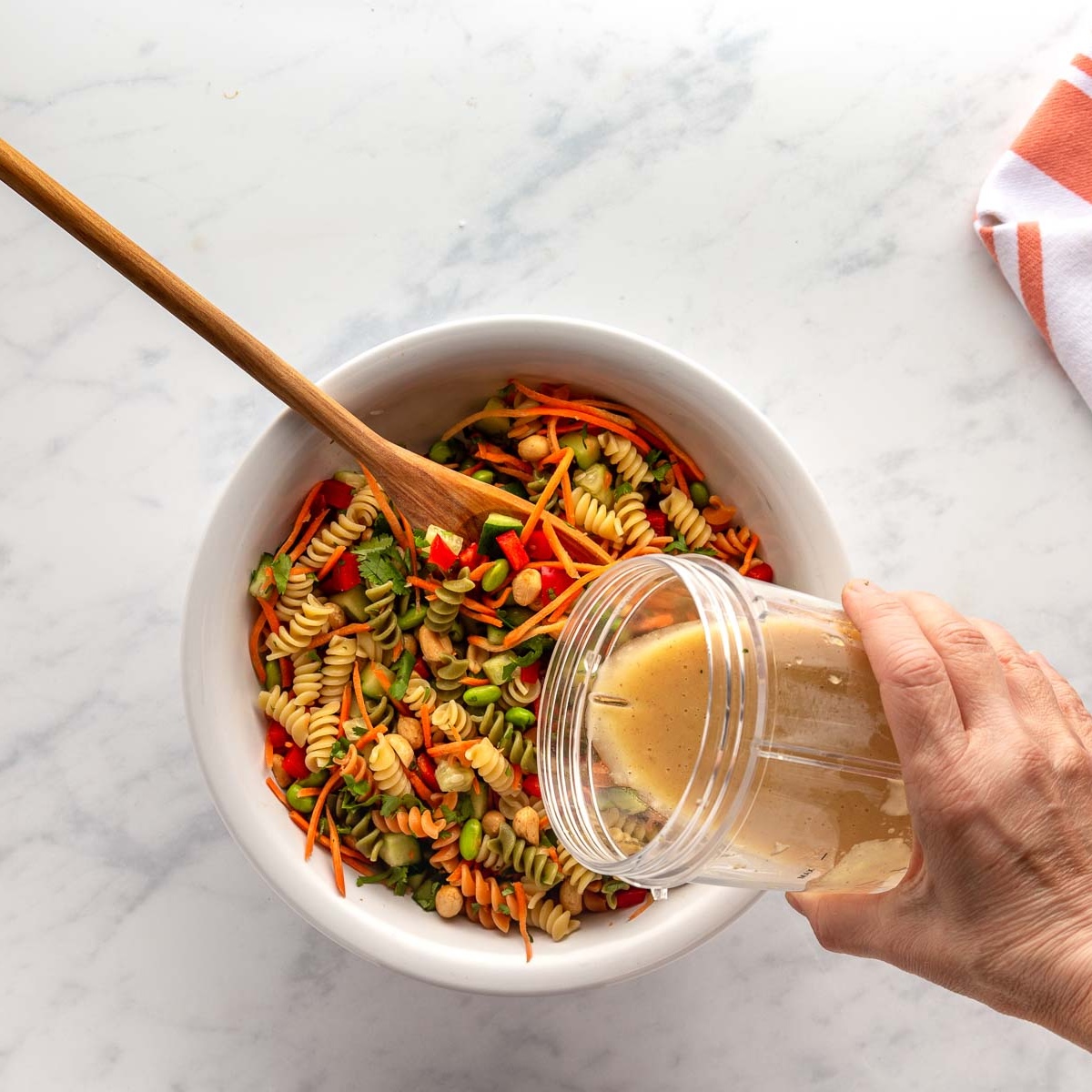
I created this dressing to go on my Thai-inspired pasta salad with edamame and peanuts, and began using it on other salads to amp up the flavor.
Drizzle it over a green salad topped with leftover Sesame Chicken for a perfect summer lunch or dinner—a bed of romaine lettuce with shredded carrots, diced bell peppers, and edamame topped with slices of Sesame Chicken is delicious drenched with this Sesame Ginger Dressing.
Try it in a Thai-inspired bowl with rice or noodles, chicken, and colorful veggies, mix it in an Asian slaw, or try it in my Thai Pasta Salad—it's the perfect complement to the edamame and peanuts in the salad.
What you need to make Sesame Ginger Dressing
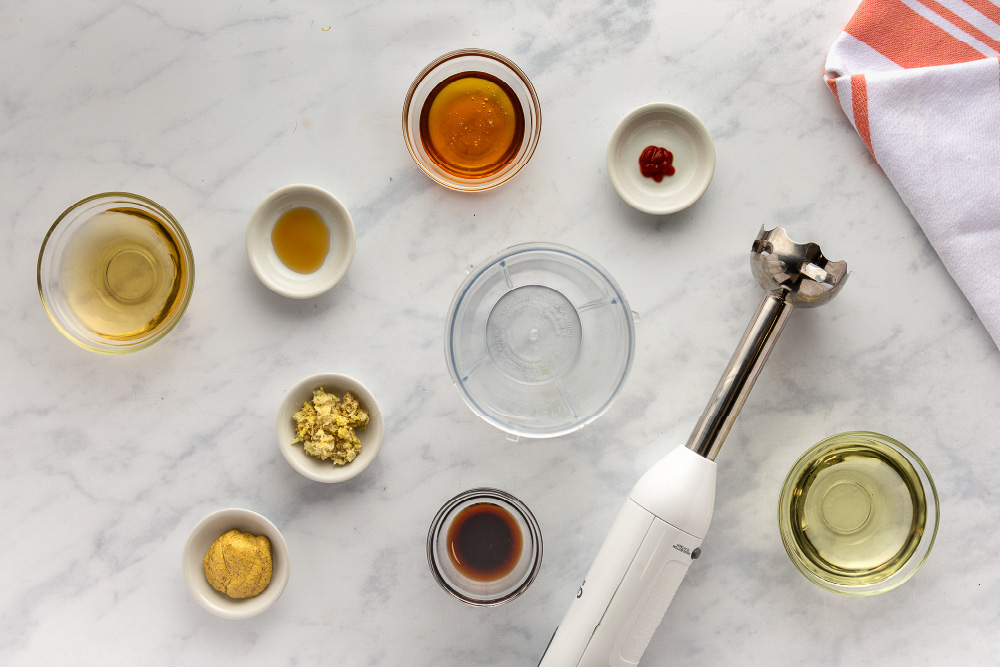
- vegetable oil
- rice wine vinegar (also called rice vinegar)
- tamari or soy sauce
- Dijon mustard
- freshly grated ginger
- honey
- toasted sesame oil
- sriracha hot sauce
See recipe card for quantities.
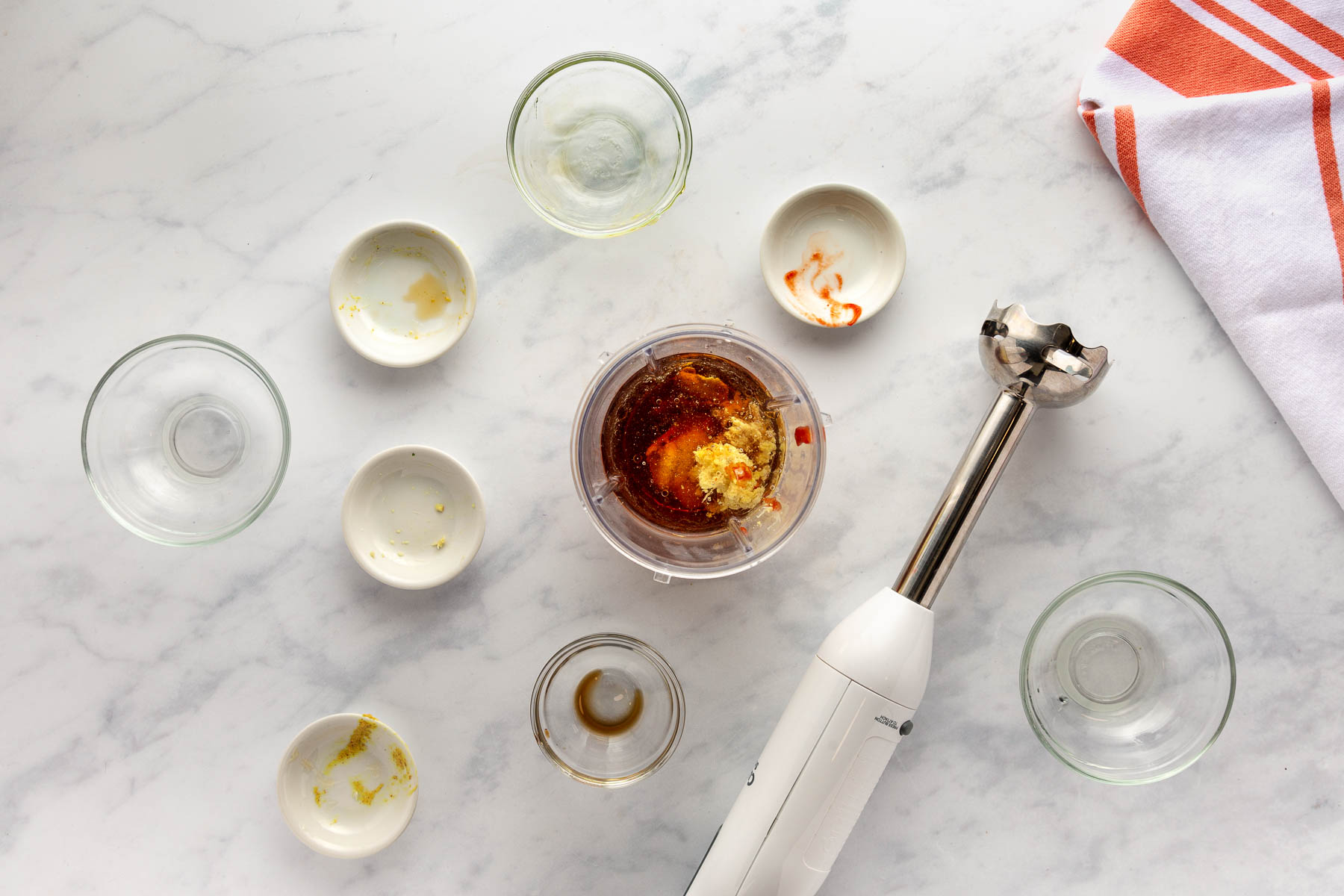
How to make Sesame Ginger Dressing
Combine all of the dressing ingredients in the immersion blender container (if you do not have an immersion blender, you may use a regular blender). I do not recommend using a whisk to mix the salad dressing as it will be difficult to get it to the point of emulsifying. Immersion blenders are wonderful for safely blending both hot and cold foods, and cleanup is much quicker than with a full-size blender.
Blend the sesame ginger vinaigrette for 1-2 minutes until the mixture has emulsified into a smooth consistency.
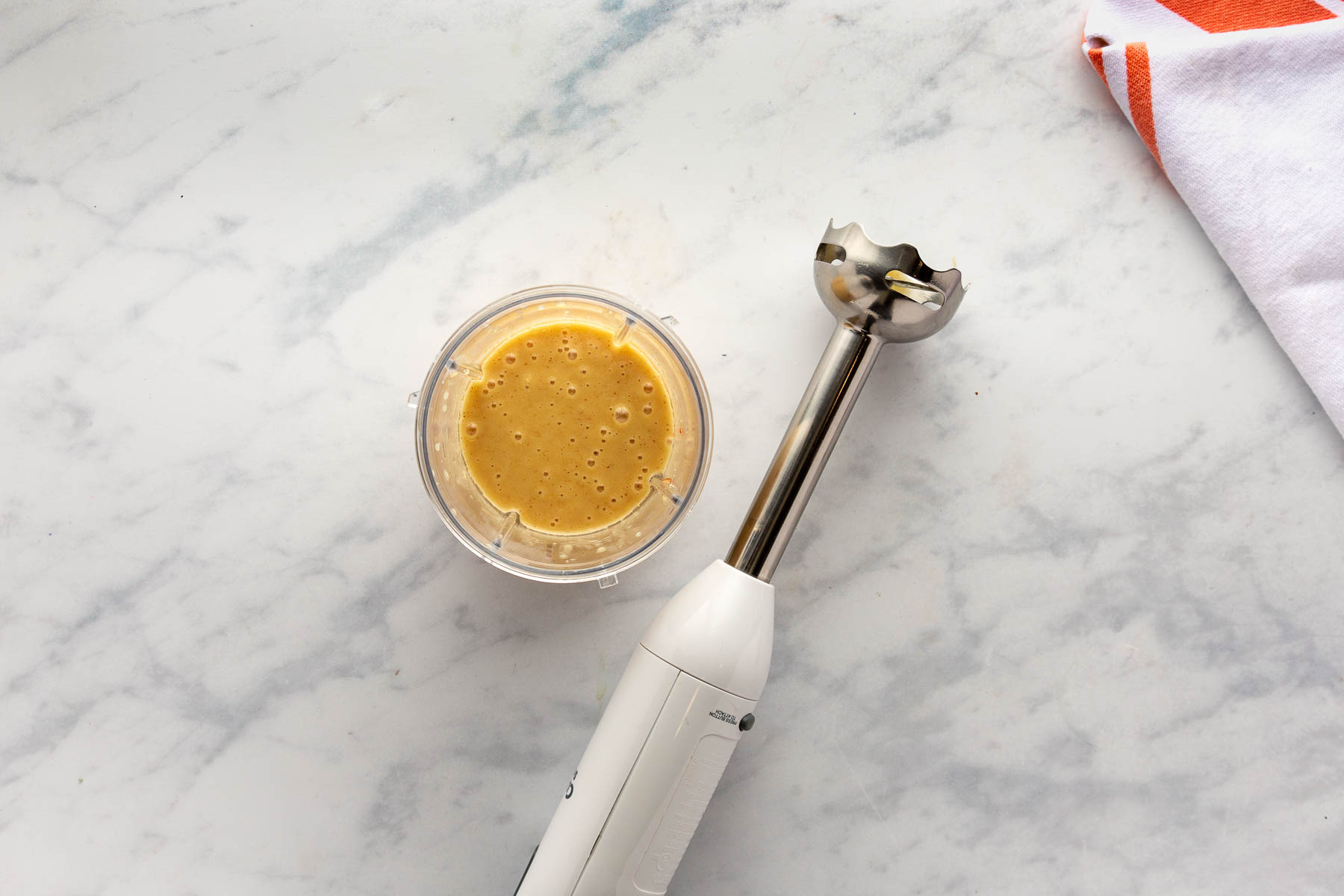
Store the sesame ginger dressing in an airtight container such as a mason jar in the refrigerator (if your immersion blender container came with a lid, you can use that) for up to 4 days. You may need to stir, shake, or even blend the dressing before serving again.
FAQ
What is tamari?
Tamari is a Japanese soy sauce that is derived from miso paste. It is made with little to no wheat (San-J brand is gluten-free), and it has a richer flavor that taste less salty than soy sauce.
Tamari is generally more expensive than soy sauce and is harder to find in a store brand. I always use tamari when adding to sauces and dressings, but for recipes such as marinades where larger quantities are required, I use soy sauce.
How do I grate fresh ginger?
Ginger root is sold in the produce section of grocery stores. To use it in recipes, it should be peeled with a vegetable peeler to reveal the fresh, moist root under the dry skin. I generally peel about two inches of the root and use the unpeeled portion to hold while I grate it.
To grate, use the small section of a standing grater or for better results, a microplane grater. Push the peeled part of the root across the grating plane over a dish to catch the grated ginger. Periodically scrape the excess ginger clinging to the back side of the grater into the dish to clear the holes.
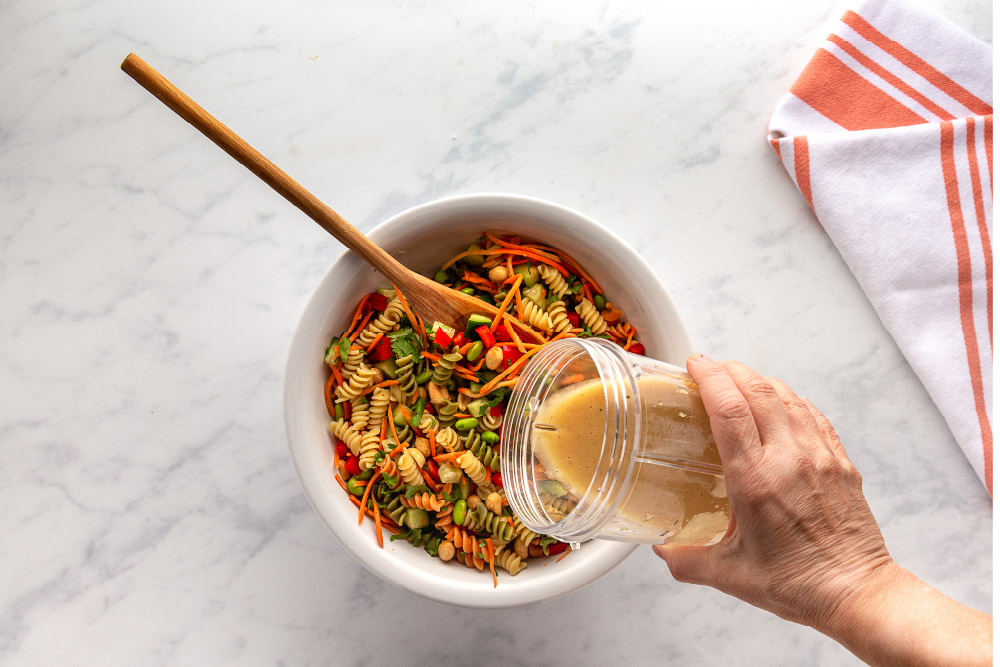
Recipe
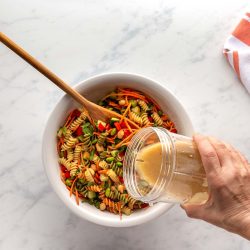
Sesame Ginger Dressing
Equipment
Ingredients
- ¾ cup vegetable oil
- 4½ tablespoons rice wine vinegar
- 2¼ tablespoons tamari or soy sauce
- 1½ tablespoons Dijon mustard
- 1 to 3 tablespoons freshly grated ginger, to taste
- 3¾ tablespoons honey
- ⅓ teaspoon toasted sesame oil
- ⅓ teaspoon sriracha hot sauce
Instructions
- Combine ¾ cup vegetable oil, 4½ tablespoons rice wine vinegar, 2¼ tablespoons tamari or soy sauce, 1½ tablespoons Dijon mustard, 1 to 3 tablespoons freshly grated ginger, 3¾ tablespoons honey, ⅓ teaspoon toasted sesame oil, and ⅓ teaspoon sriracha hot sauce in the immersion blender container (if you do not have an immersion blender, you may use a regular blender).
- Blend for 1-2 minutes until the mixture has emulsified into a smooth consistency.
- Store in an airtight container in the refrigerator for up to 4 days.


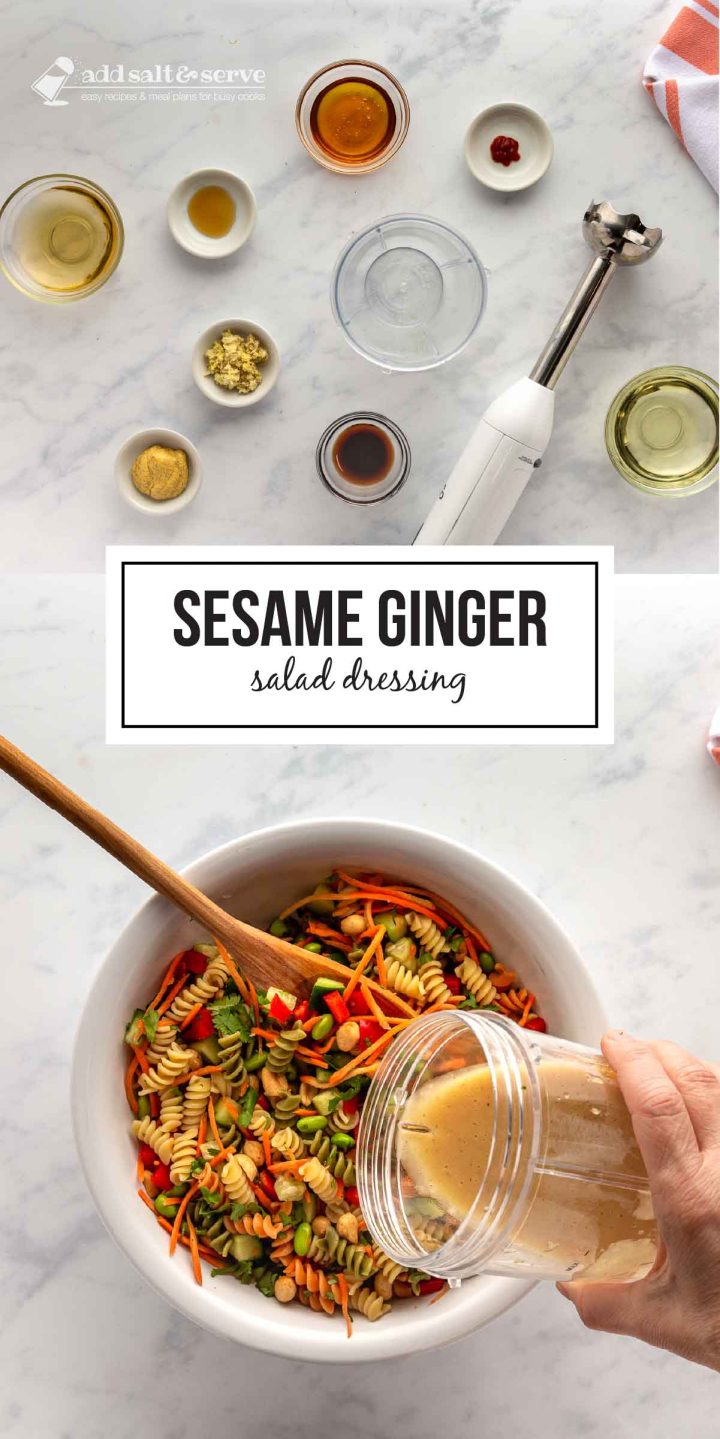

Leave a Reply